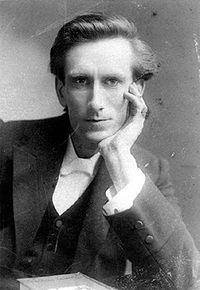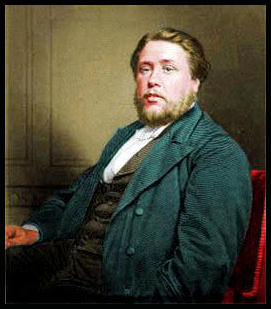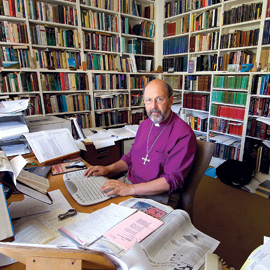 From Teresa of Avila: Selections from The Interior Castle, HarperCollins Spiritual Classics, 2004, pp. xiii-xi. Also available inThe Great Omission, San Francisco: HarperCollins, 2006, pp. 206-209.
From Teresa of Avila: Selections from The Interior Castle, HarperCollins Spiritual Classics, 2004, pp. xiii-xi. Also available inThe Great Omission, San Francisco: HarperCollins, 2006, pp. 206-209.
I first studied Teresa of Avila's Interior Castle twenty or so years ago, after many years of efforts to understand, live, and communicate what the spiritual life portrayed in the Bible was meant to be. I had found many helpful companions on The Way, spread across time and space and "denominational distinctives." But this book and this author immediately announced themselves as a unique presence of God in my life. The book provided instruction on a living relationship with God that I had found nowhere else. I think it very likely that you will experience the same refreshing shock as I did when you read this book.
The first thing that Teresa helped me with was appreciation of the dignity and value-indeed, the vast reality-of the human soul. Emphasis upon the wickedness and neediness of the human being tends to submerge our awareness of our greatness and our worth to God. That emphasis in turn inclines us toward thinking of ourselves as nothing, and to mistake our lostness and vileness for nothingness, a mere vacuum, rather than seeing it as the desolation of a splendid ruin.
Teresa urges us to start on the path to transformation by "considering our soul to be like a castle made entirely out of a diamond or of very clear crystal, in which there are many rooms." We are meant to occupy every room or "dwelling place" with God, and thereby to become the radiant beings which he intends. Teresa makes clear what lies half-concealed upon the pages of the Bible and in the lives of the "great ones" for Christ-that I am an unceasing spiritual being, with an eternal destiny in God's great universe. We may be far from God's will, but we must know "that it is possible in this exile for so great a God to commune with such foul-smelling worms; and, on seeing this, come to love a goodness so perfect and a mercy so immeasurable."
The "rooms" in the interior castle are ways of living in relation to the God who made us and seeks us. Teresa's superiors had ordered her to write on prayer. And so she does, but prayer understood precisely as a way of living, not as an occasional exercise. This book, and others such as The Way of the Pilgrim, helped me to understand what it is to live a life of prayer. I learned from it what it means to live in communication with God to him, not just speaking, but listening and acting. Most of what I know about the phenomenology of God speaking to us, I learned from studying and putting into practice what Teresa says in the Sixth Dwelling Places, Chapter Three. It is still, I think, the best treatment ever written of what it is like for God tospeak to his children.
Another thing I came to see more clearly from studying this book was why things go as they do in the lives of professing Christians. There is still today not much good information on this. But if you will look at ordinary "church life" with Dwelling Places One through Four in hand, you will be able to understand a huge amount of what is really going on, and of what to expect, for good and for ill; and you will be able to give good counsel and direction to yourself and others as you go through the process of life together. You will realize that Teresa is an absolute master of the spiritual life and possesses an amazing depth and richness of spiritual theology. Yet there is no stuffiness or mere "head knowledge" in her at all. She has remarkable freedom to be experimental, and to say "now I can't really explain this to you," and to go ahead and say astonishingly illuminating things anyway. You can put what she says to the test.
Back of all this instruction is the fact, which was very important for my particular background, that there is a reliable order and sequence to growth in the spiritual life. This is built into her model of the "castle" of the soul. "Now," she in effect says, "this is the layout, this is what is to be gone through, here is where you start, here are some things to do, and here is what you may expect to happen and what it means." And she conveys all this wisdom with an appealing humble, experimental tone.
Finally, Dwelling Places Five through Seven proved to be, for me, the finest treatments of union with Christ and with God that I have found in spiritual literature. There are other helpful things, in this connection, such as James Stewart's A Man in Christ, but for the phenomenology, the descriptive analysis of the details of what it is really like, nothing has ever surpassed Teresa'sCastle. Union with Christ--in regeneration, justification, sanctification, and glorification-is of all themes the one in most need of recovery today. And Teresa's entire treatment of redemption in the spiritual life with Christ is unsurpassed and unlikely to be surpassed in the future.
One of the unfortunate things that has happened to the latter stages of the Interior Castle, and even to the book as a whole, is that people have tried to read it as if it were an "interfaith," not a distinctively Christian, portrayal of "mystic union." To do this is to miss its substance, deprive it of its context, and make it unprofitable for those whose faith is in Christ and his Father. Of course anyone is free to take what they can from it, but to dismiss its particularity will leave little to genuinely assist the reader to walk with God.
A word about how to read this book. It is not a model of easy reading, judged by today's standards, and must be approached as if you were mining for treasure-which you are. First, read it nonstop-just push ahead--to get a view of the whole. Mark themes and divisions clearly as you go, and at the end sketch out the outline. This is crucial for understanding Teresa's project as a teacher. Then go back and read slowly from beginning to end. This time you mark striking passages for further study. Then meditatively dwell on those passages, not necessarily from beginning to end, but in the order your heart and mind call you to. Call upon "His Majesty" to assist you as he assisted Teresa. And the diamond castle which is your soul will increasingly glow with the divine presence.
http://www.dwillard.org/articles/artview.asp?artID=163















